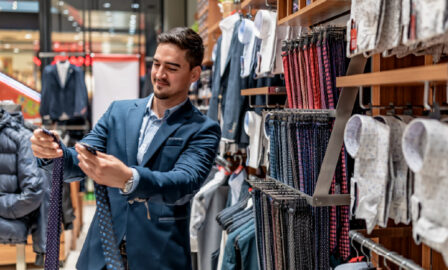2023 Retail Industry Trends
Read our updated trends report here: 2024 Retail Industry Trends
Clarkston’s team of retail consultants have highlighted the top retail industry trends that businesses should consider. Read all 5 trends for 2023 by downloading the full report here.
Emerging from the COVID-19 pandemic and major supply chain disruption, customers have developed new expectations that are shaping retail. The at-home economy continues to expand, with increased capabilities to experience retail offerings through eCommerce and digital channels. However, with some expectation that 2023 might feature a return to pre-pandemic consumption levels, the retail industry overall has instead experienced lackluster sales thanks in large part to the impacts of inflation.
With 3 in 5 Americans suffering financially due to rising prices, customers are being influenced to spend less. Because of this, there are some forecasts of a shrinking middle-class consumer base and with that, challenges ahead for mid-tier brands. Despite inflation, retailers that were financially well-positioned going into the pandemic have found success in expanding their retail channels to reach shoppers in more efficient ways. Ultimately, committing to invest in and improve the customer experience through the trends discussed below will strengthen retailers’ positions going into the second half of 2023 and into 2024.
2023 Retail Trends
Trend #1: Channel-less Experiences
The emergence of the hybrid shopping experience beckoned the growth of omnichannel retail. Now, as the majority of retailers utilize multiple channels to deliver smoother customer experiences, discussions have shifted to the newest commerce trend known as the channel-less experience. Building off of omnichannel investments, channel-less retail focuses on creating a unified brand experience so that the channel in which a customer experiences the brand doesn’t matter.
To become channel-less, retailers must have a highly efficient and organized hybrid system in place. Investments in modern POS systems, AR/VR experiences, and leveraging the strengths of IoT are tangible ways to bridge physical and digital channels seamlessly. Integration of new systems and a channel-less experience rely heavily on a company’s understanding of customer behavioral patterns. The retailers that constantly gather data, utilize it to define customer segments, and tailor shopping experiences by segment are the ones who reap the benefits of a channel-less system. As 80% of customers are willing to provide personal information to connect their online and in-person experiences, retailers are coming up with innovative ways to accomplish this. Ulta Beauty, for example, is sending their customers targeted promo codes for discounts if they buy online and pick up in-store. This not only incentivizes product purchases but unifies Ulta’s omnichannel experience in an interactive way.
Download the Full 2023 Retail Trends Report Here
As retailers continue to experiment with ways to develop their version of a channel-less experience, the benefit of these investments can’t be understated. One study found a 494% increase in order rate when using three or more channels to market, instead of just one. Moreover, the big reward of an effective transition to omnichannel is the increase in customer retention. When integrated well, a channel-less retail experience builds long-term relationships with customers beyond a single transaction, and the value of that is priceless.
Trend #2: Social Selling
There are an estimated 4.9 billion social media users across the world, each of whom can double as customers of goods and services in the retail industry. Social media apps such as Facebook, Instagram, Pinterest, and TikTok have expanded their commerce capabilities, becoming functioning channels for the entire shopping experience from product discovery to item purchase. With sales expected to exceed $53 billion in 2023, the utilization of social media has unveiled a valuable channel in the retail industry known as social commerce.
The social commerce experience has transformed the process of shopping through forms of media such as TikTok, Instagram Reels, and YouTube Shorts. Algorithms within each app personalize these short, targeted videos and advertisements to the individual user. From this, 88% of people say they’ve been convinced to buy a product or service by viewing a brand’s video. However, the power of social media not only comes from the brand’s content, but also from the social media influencers. From micro to mega-influencers, shoppers place a huge amount of trust in their recommendations and often buy in large part because of them.
The direction of the retail industry is controlled by the preferences of Millennials and Gen Z, and social selling is no exception. The influence of the mobile-first discovery process requires retailers to have used the app to discover new brands, products, or services. On Instagram, 1 in 2 people have used the app to discover new brands, products, or services. Furthermore, not only are customers discovering the products, but they’re also purchasing them, with 47% of TikTok users saying they’ve bought something they’d seen on the app. Social media has also made the shopping process easier by adding in-app purchasing features of their own, making these apps an extension of eCommerce for retailers nationwide. Savvy retailers are already evaluating approaches to best attract younger generations, like Gen Alpha, who will have significant buying power in the coming years. Continue reading by downloading the full report below.
Download the Full 2023 Retail Trends Report Here
Read last year’s Retail Industry Trends Report here.
Subscribe to Clarkston's Insights
Contributions from Aaron Messer



